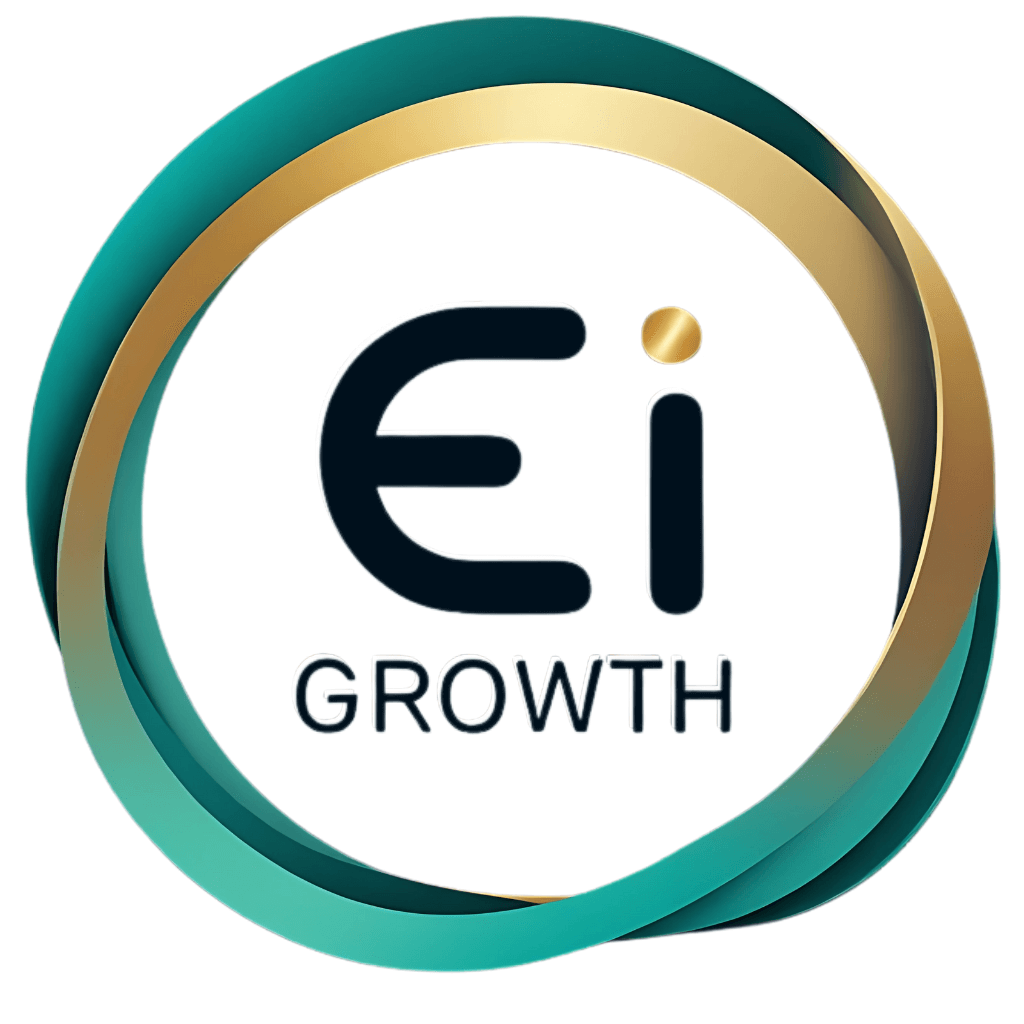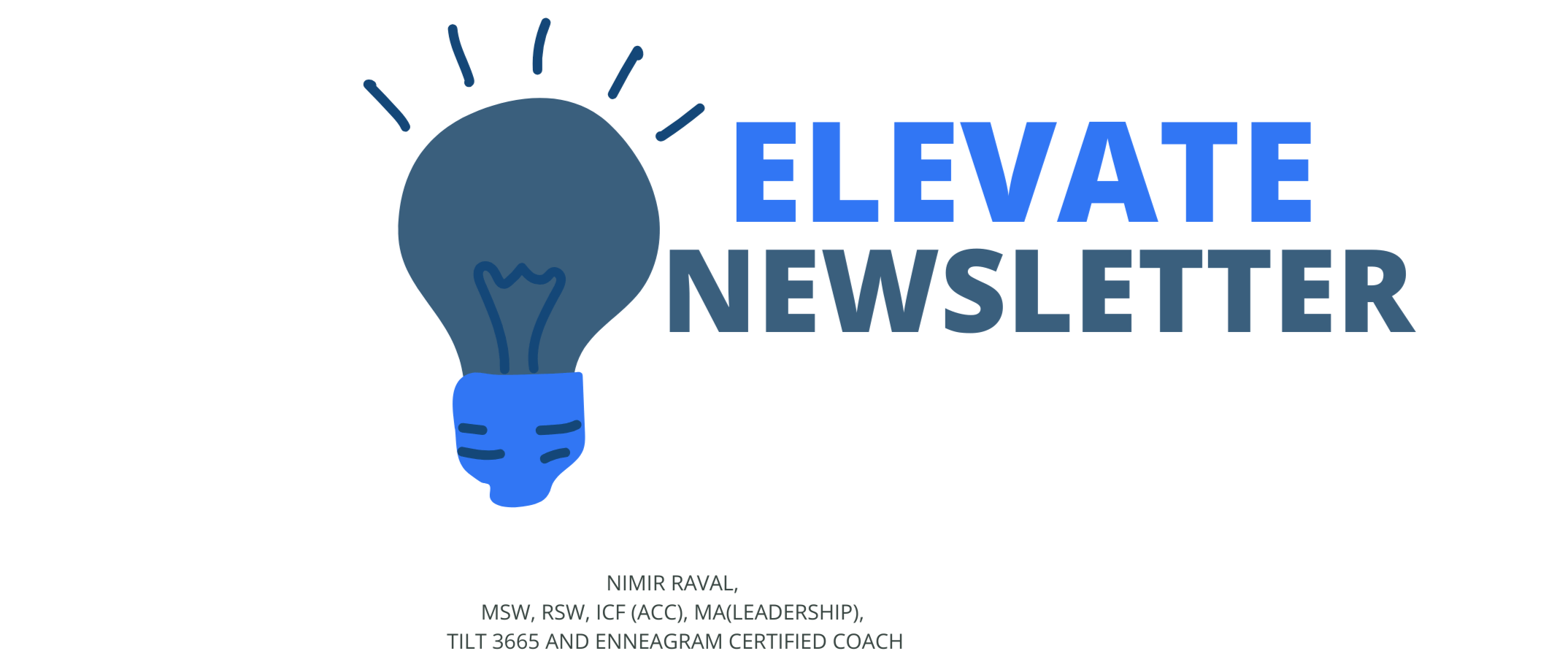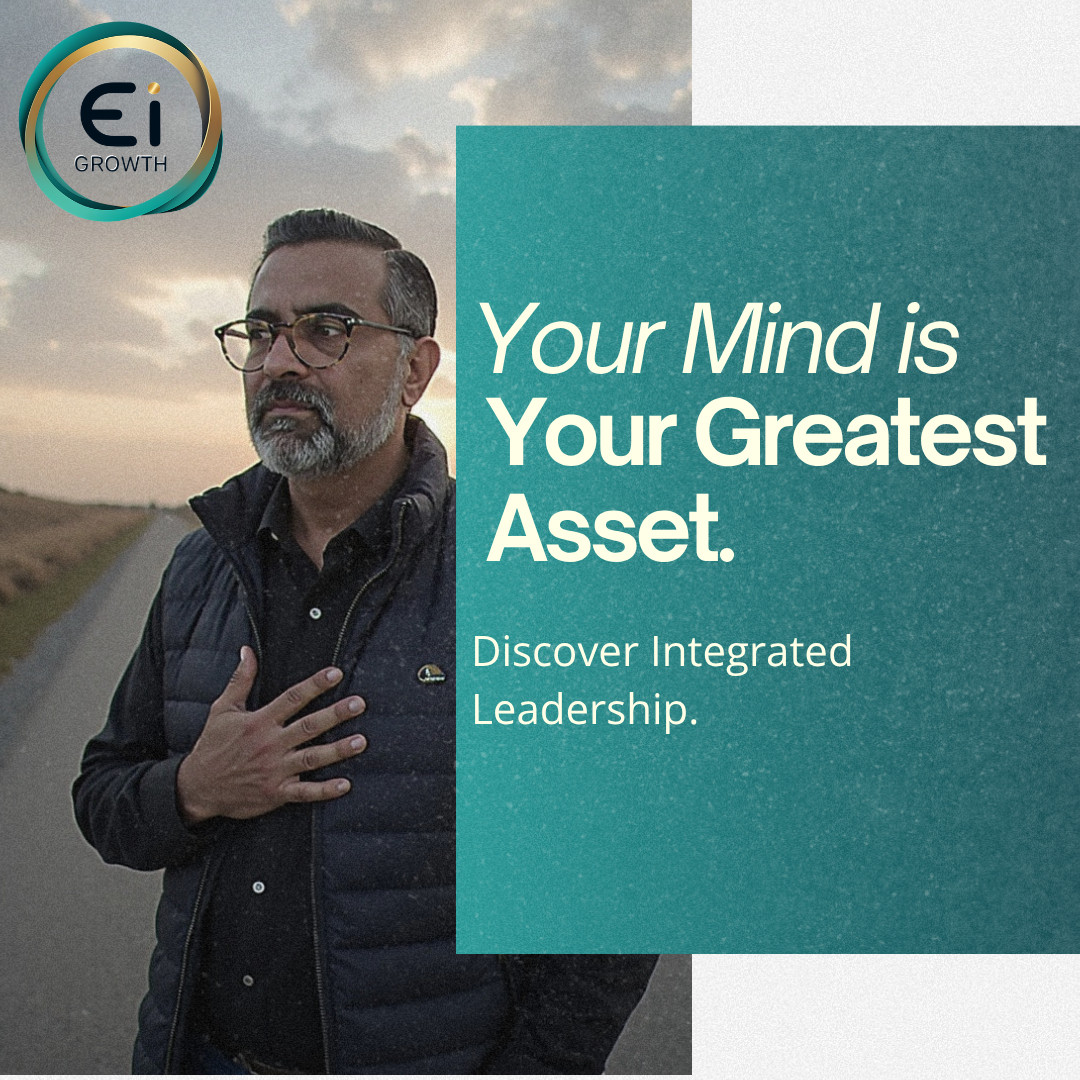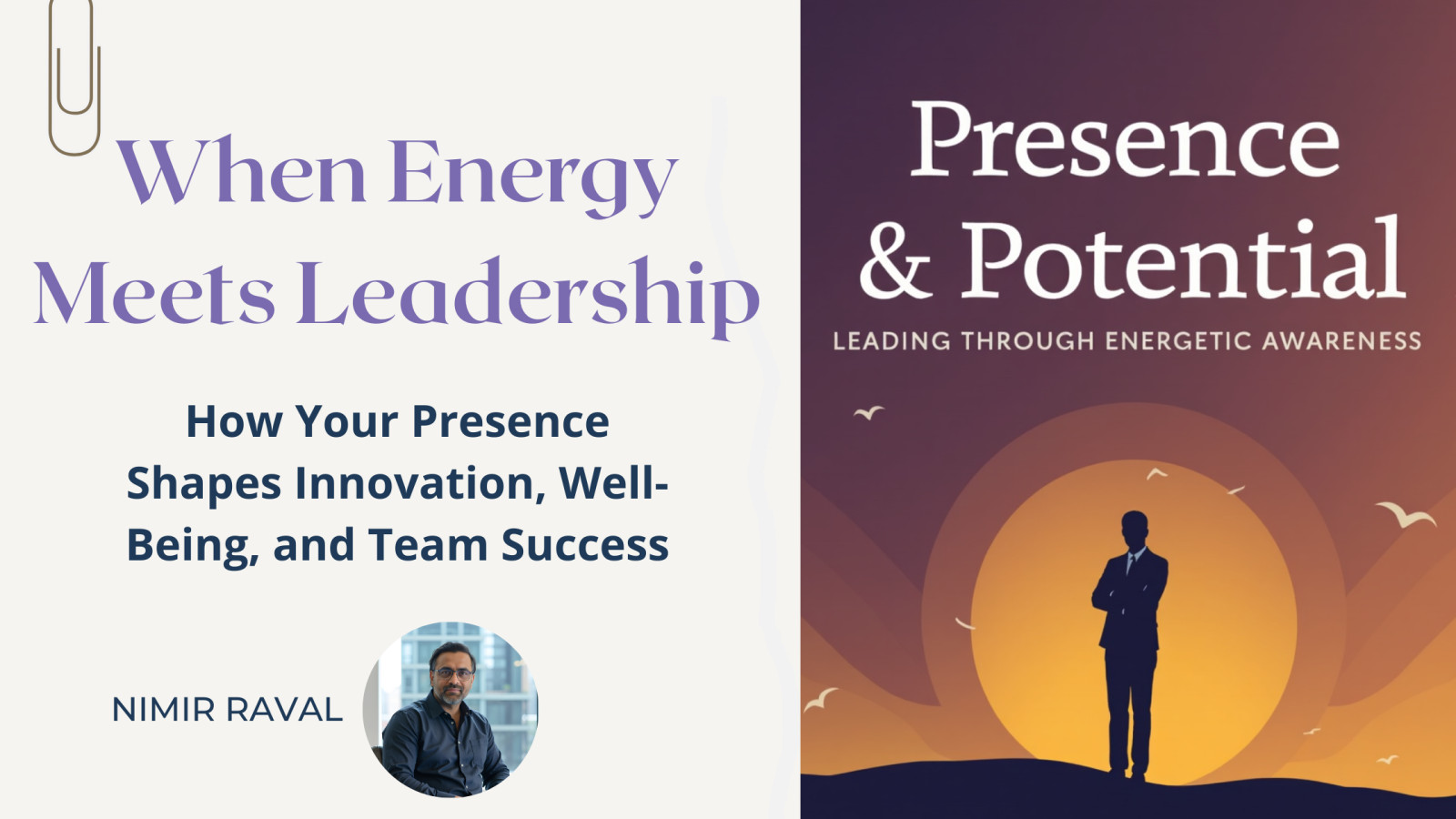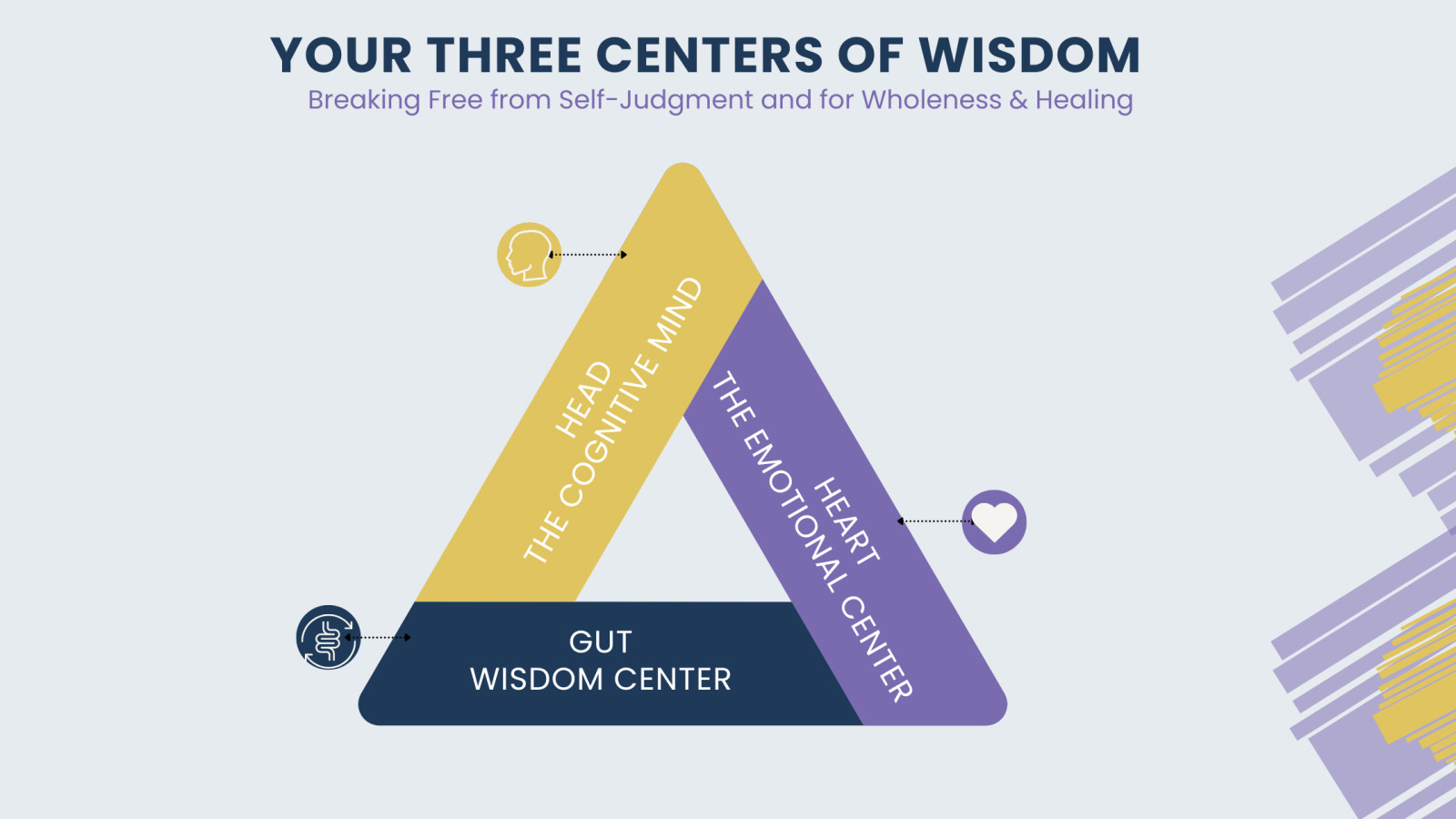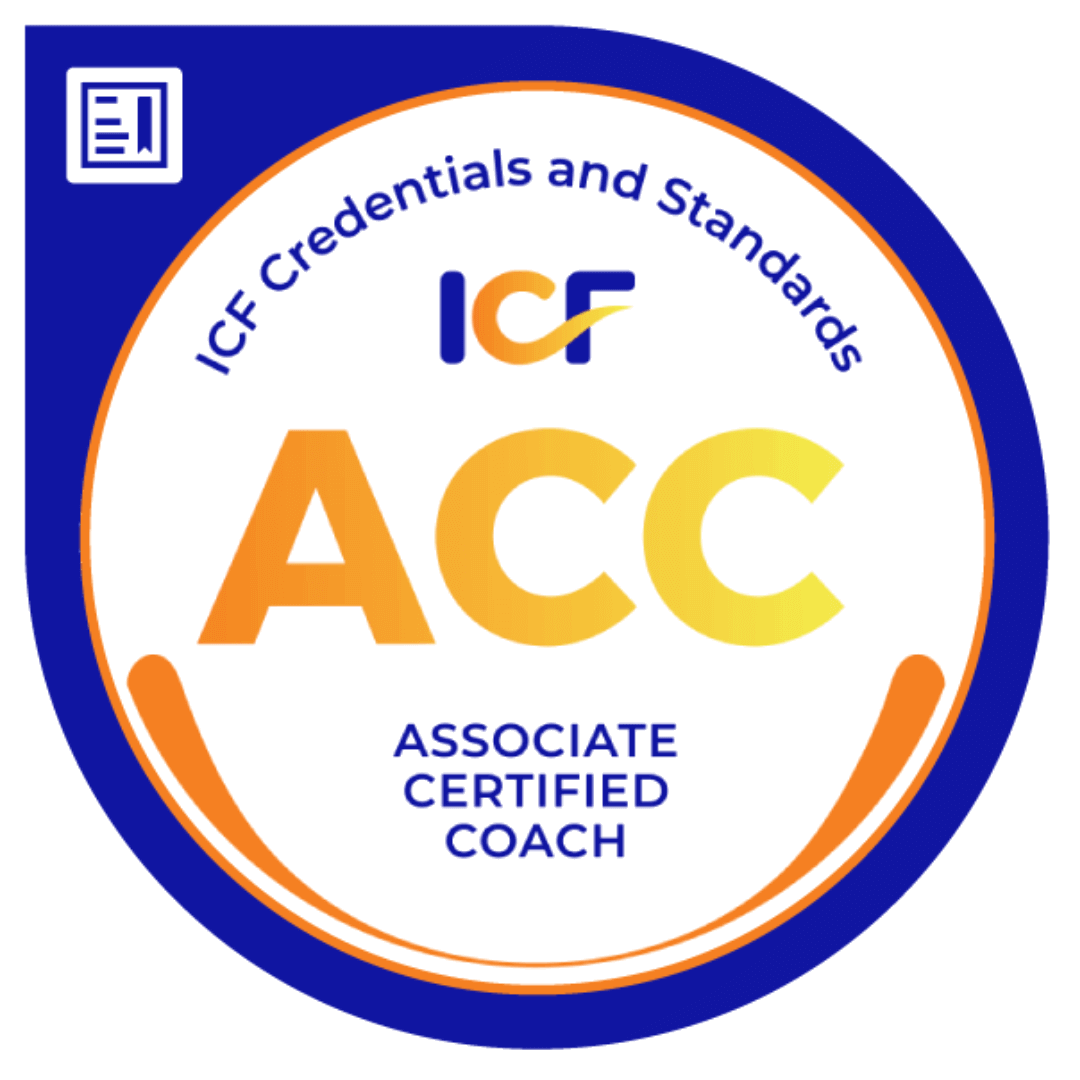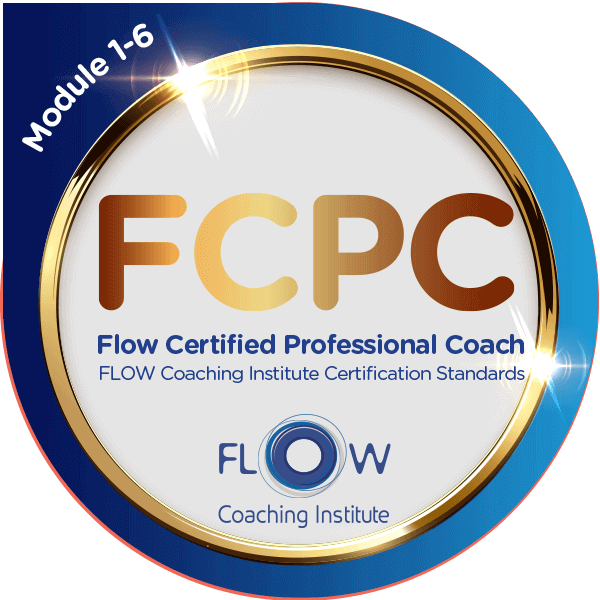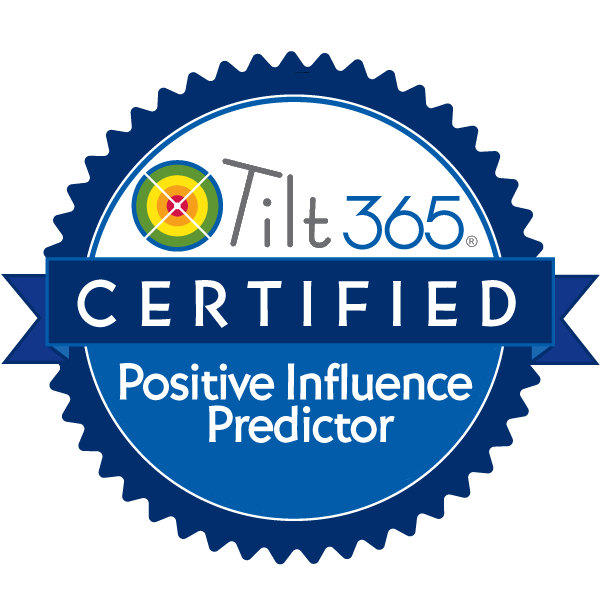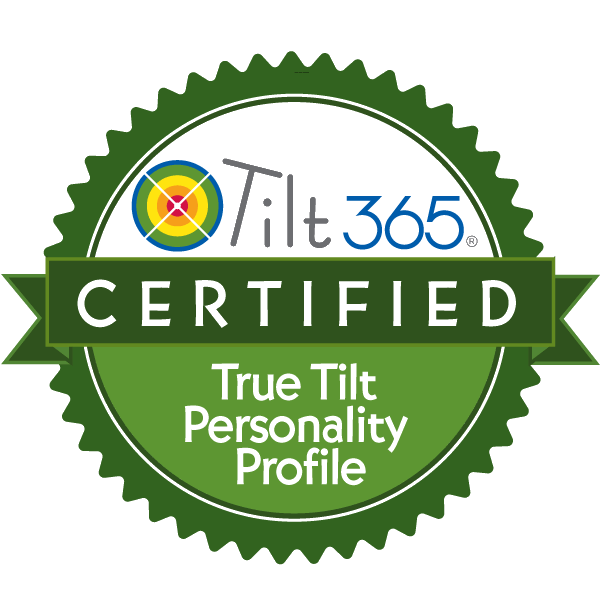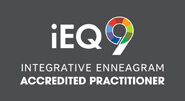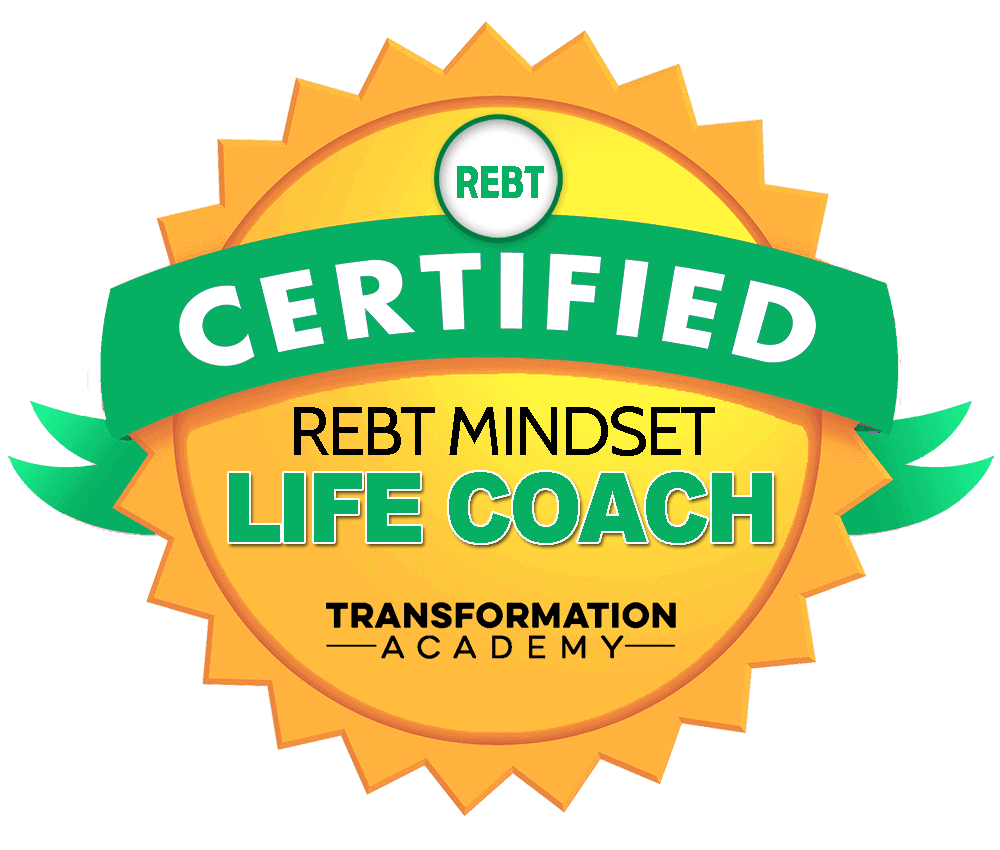
In the realm of personal growth and mental well-being, granular emotional differentiation—rooted in neuroscience—emphasizes the significance of identifying and articulating specific emotions rather than broad categories. This practice enhances emotional regulation, reduces stress, and elevates emotional intelligence, as accurately labeling our emotions engages the prefrontal cortex, aiding in effective emotional management. Techniques such as expanding your emotional vocabulary, using mood tracking apps, and conducting regular emotional check-ins can significantly bolster emotional granularity.
Integrating neuroscience with coaching unlocks profound potential in personal development, leveraging brain function insights to tailor strategies that foster sustainable growth. Understanding neuroplasticity—the brain's capacity to form new neural connections—empowers coaches to help clients reframe limiting beliefs and cultivate empowering thought patterns. This synergy not only reinforces the coaching process but also builds client confidence, knowing their efforts are grounded in robust scientific research.
Employing neuroscience-backed strategies like cognitive restructuring and adopting a growth mindset can help reframe emotional responses, enhancing emotional intelligence and overall well-being. The goal is to understand, accept, and manage negative emotions effectively, contributing to reduced stress and improved mental health. By mastering these techniques, individuals can unlock their full potential in both personal and professional spheres.
Do you often find yourself overwhelmed by emotions but struggle to pinpoint exactly what you're feeling? In the realm of personal growth and mental well-being, being able to identify and articulate specific emotions—rooted in neuroscience—is a game-changer. By moving beyond broad categories and diving into granular emotional differentiation, you can enhance emotional regulation, reduce stress, and elevate your emotional intelligence. This practice engages the prefrontal cortex, aiding in effective emotional management.
Imagine the benefits of accurately labeling your emotions: more control over your reactions, improved mental clarity, and a heightened sense of self-awareness. Techniques such as expanding your emotional vocabulary, using mood tracking apps, and conducting regular emotional check-ins can significantly bolster emotional granularity.
Read more...
In today's rapidly evolving leadership landscape, the most invaluable investment you can make is in yourself. This philosophy goes beyond mere financial commitments, encouraging a holistic approach to personal and professional growth. By dedicating time, effort, and resources to self-improvement, leaders not only enhance their capabilities but also enrich their overall well-being.
Intellectual growth, mental and emotional well-being, physical vitality, and boundary setting are crucial dimensions of self-investment. Attending workshops, reading extensively, prioritizing mental health, regular exercise, and safeguarding personal time are essential practices. These efforts collectively foster a resilient, balanced, and dynamic leadership style that resonates positively with others.
Investing in yourself creates a ripple effect, inspiring and empowering those around you. It encourages a culture of self-improvement and collective excellence within your organization. Embark on this journey of self-investment and witness its transformative impact on your leadership capabilities and the lives you touch.
Read more...
The power of delayed gratification is an invaluable skill in today's gratification-driven world, enabling individuals to resist immediate rewards in favor of more valuable long-term outcomes. Rooted in self-regulation and impulse control, mastering this concept leads to personal growth, professional success, and profound fulfillment. By cultivating delayed gratification, adults can align their actions with deeper values and aspirations.
Delayed gratification involves the interplay between our emotional "hot" system, which craves immediate rewards, and the rational "cool" system, which considers long-term benefits. Effective strategies to activate the "cool" system include reframing temptations, engaging in distracting activities, and reminding oneself of larger goals. Balancing impulse and restraint allows individuals to enjoy life's simple joys while working toward significant, long-term aspirations.
For adults, especially those with ADHD, cultivating delayed gratification can lead to extraordinary personal, professional, and relational benefits. Practical strategies include breaking down goals, utilizing external reminders, practicing mindfulness, and seeking professional support. By embracing a growth mindset and consistent strategies, adults can transform delayed gratification into a powerful habit for achieving lasting fulfillment.
Read more...
This blog post addresses the distinct challenges and opportunities faced by LGBTQ+ professionals in the workplace. It emphasizes the importance of embracing personal authenticity and championing inclusivity to thrive in one's career.
The significance of support and building resilience is highlighted, particularly for queer individuals and LGBTQ business professionals. This transformative journey aims to shape workplaces that celebrate diversity and ensure that no one feels alone in their path. By standing tall and embracing one's truth, readers are inspired to be a beacon of hope for a more inclusive tomorrow.
Embodying a message of unity, the post invites everyone to join in creating a brighter future marked by inclusivity and respect. Let's shine together and be the change we wish to see in the world.
Read more...
Prioritizing mental health in the workplace is vital for overall well-being and offers numerous benefits, including enhanced productivity, reduced stress levels, improved job satisfaction, better relationships with colleagues, and long-term health advantages. Recognizing signs of stress and burnout, such as persistent fatigue, irritability, and difficulty concentrating, is essential for addressing these issues before they escalate. Employees should be proactive in managing their mental health by practicing self-care strategies, such as taking short breaks, engaging in mindfulness, staying hydrated, setting boundaries, and prioritizing tasks.
Building a supportive work environment is also crucial; it involves fostering open communication, offering flexible work arrangements, and demonstrating empathy and understanding from colleagues and supervisors. Encouraging a culture where employees feel their voices are heard and their needs respected greatly enhances job satisfaction and productivity. Organizations should also provide resources like counseling services and mental health days to show a commitment to their employees' holistic well-being.
Creating a workplace that acknowledges individual challenges and offers tailored assistance helps cultivate a positive atmosphere where everyone feels valued. This can be achieved through direct support, workload adjustments, and additional resources to address unique difficulties employees face. Collectively, these efforts build a supportive environment conducive to employee thriving, ultimately driving organizational success.
Read more...
In today's digitally connected world, loneliness remains a pervasive issue that affects our physical, mental, and social well-being. The comprehensive biopsychosocial model highlights the complex interplay between biological, psychological, and social factors, offering a deeper understanding of how loneliness impacts our health. Unlike the traditional biomedical model, this approach acknowledges the crucial role of psychological and social elements in shaping overall health.
Loneliness is not just an emotional state; it has tangible consequences on physical health, leading to a weakened immune system, increased inflammation, and higher risks of chronic conditions. On the psychological front, loneliness can generate feelings of isolation, depression, anxiety, and cognitive decline. Furthermore, the absence of strong social connections significantly hampers our emotional fulfillment and overall life satisfaction.
Addressing loneliness requires a multifaceted approach, including fostering meaningful social connections, cultivating emotional resilience, adopting healthy lifestyles, and seeking professional support when necessary. By embracing the biopsychosocial model, we gain insights into the far-reaching effects of loneliness, paving the way for more effective interventions. Together, let's explore and tackle the hidden toll of loneliness, promoting a holistic path toward well-being.
In a recent exploration of Father's Day, the complexities of diverse relationships take center stage, highlighting the bonds we share with children, pets, and the struggle against loneliness. Loneliness, as a universal emotion, affects individuals regardless of gender, orientation, or family structure. This blog post delves deeper into the multifaceted nature of loneliness, offering both personal and professional insights on this pervasive emotional state in today's fast-paced, digitally dominated society.
The blog categorizes loneliness into various contributors, such as social isolation, relational dynamics, and psychological factors like low self-esteem and mental health challenges. Cultural and societal pressures, along with technological influences like social media and digital overload, exacerbate feelings of isolation. Additionally, environmental and situational factors, including aging and geographical location, further compound this issue, underscoring the need for meaningful connections and support systems.
Addressing loneliness involves understanding its root causes and fostering self-awareness, empathy, and open communication. Seeking professional help and building genuine connections are pivotal steps toward combating this emotion. Ultimately, creating a connected and supportive society is crucial, as reaching out for help is a courageous act toward healing and personal growth.
Read more...
Regret, while often painful, can serve as a transformative tool for personal growth and better decision-making. Psychological insight from Dr. Robert Leahy reveals that regret prompts us to reflect on past mistakes, encouraging improved future choices. This emotion is deeply rooted in our brain's architecture, with different types of regret influencing our stress resilience or vulnerability.
Recent research has identified the medial prefrontal cortex and nucleus accumbens as key brain regions involved in processing regret, with the CREB gene playing a critical role. CREB's function varies by brain region, either enhancing stress resilience or increasing susceptibility. Understanding this can pave the way for advanced treatments for mood disorders, focused on better managing regret.
Embracing regret constructively involves several steps: acknowledging it, reflecting without ruminating, learning from mistakes, taking corrective actions, and practicing self-compassion. By treating regret as a learning opportunity rather than a debilitating emotion, individuals can transform their "what if" moments into catalysts for a brighter future. Remember, the perspective from the windshield is wider than the rearview mirror, highlighting the importance of focusing on the road ahead.
Read more...
Navigating through insecurities in a relationship highlights the delicate balance between love and fear, often overshadowing potential happiness and fulfillment. At the heart of relationship troubles, insecurities can cast long shadows over companionship, but understanding and addressing these issues fosters an environment where love, trust, and happiness flourish. This article delves deeply into the roots of jealousy, exploring the importance of communication and providing practical strategies to manage these feelings.
Effective communication is crucial in overcoming jealousy, necessitating open and honest dialogue to express thoughts and concerns without fear of judgment. Creating a safe emotional space where both partners can share their vulnerabilities strengthens trust and understanding, addressing insecurities constructively. Self-reflection and personal growth, along with practicing gratitude and engaging in trust-building activities, are vital in managing jealous feelings and nurturing a healthier relationship dynamic.
Building a secure and balanced relationship involves maintaining independence while supporting each other emotionally and practically. Recognizing each other's worth, setting healthy boundaries, and avoiding behaviors that fuel jealousy is essential. By committing to self-reflection, growth, and open dialogue, couples can overcome insecurities, paving the way for a resilient and love-filled connection.
Read more...
Shame is a powerful emotion that significantly impacts our self-esteem, confidence, and sense of connection to others. It often arises from perceived failures, mistakes, or judgments and can manifest as self-criticism and a desire to withdraw. Left unaddressed, shame can lead to unhealthy coping mechanisms and prevent us from living authentically.
Self-compassion, which involves treating oneself with kindness and understanding, is a potent antidote to the detrimental effects of shame. By approaching our flaws and struggles with the same warmth and empathy we would offer a friend, we create a safe space for vulnerability and healing. This practice helps us transform our experiences of shame into opportunities for growth, resilience, and self-acceptance.
Cultivating self-compassion requires mindfulness, self-care, and the willingness to challenge ingrained patterns of self-judgment. Daily practices like compassionate self-talk, mindful self-care, and self-compassionate letter writing can integrate kindness into our lives, fostering a nurturing environment for personal growth. By embracing self-compassion, we pave the way for a life of authenticity, resilience, and deeper self-love.
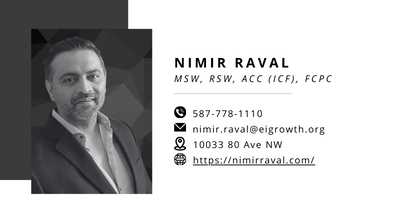
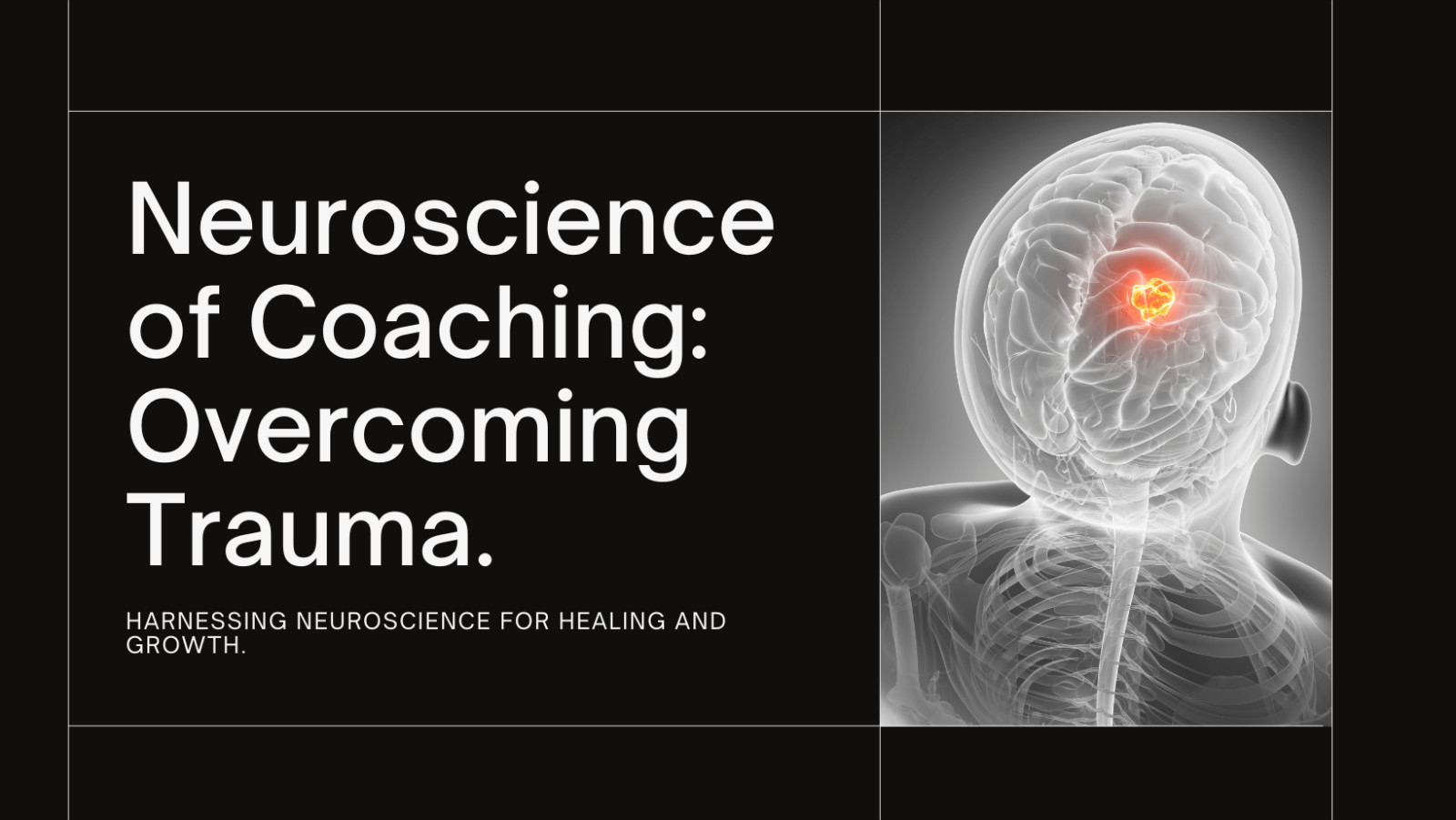
💫 Coping with the impact of trauma can be incredibly challenging. How have you been managing the effects of trauma on your daily life?
🧠 Neuroscience reveals how coaching can be transformative in overcoming trauma, rewiring neural pathways and fostering positive change. What challenges have you faced in overcoming the impact of trauma on your well-being?
🌱 Trauma can disrupt our brain's processing, leading to anxiety, depression, and emotional dysregulation. How has trauma affected your emotional well-being and sense of stability?
🤝 Selecting the right coach is crucial for your trauma healing journey. What kind of support would be most beneficial for you in navigating the complexities of trauma and healing from its effects?
This partnership leverages the power of coaching and neuroscience to foster a holistic approach to healing, enabling personal growth and fulfillment in the face of trauma's challenges.
Read my latest article and if you need you can always connect with me, the journey of healing from trauma is deeply personal, and it can lead to increased resilience and empowerment. If you are seeking support in overcoming trauma and fostering personal growth, I invite you to connect with me at nimir.raval@eigrowth.org for a holistic coaching experience. Let's embark on this transformative journey together.

Spring, a season of vibrant blooms and rejuvenating energy, presents a unique opportunity for personal growth and enhancing mental well-being. As we transition from the cold of winter to the warmth of spring, the environment around us awakens, offering a potent reminder of the potential for renewal and transformation within ourselves. It's a time to embrace change, reassess personal goals, and engage in activities that foster growth and well-being.
The arrival of spring is not only a visual feast but also a period that can have a profound positive impact on our mental health. Exposure to the natural beauty of spring can help reduce stress and anxiety, boosting mood and overall well-being. Activities like outdoor exercise, gardening, and practicing mindfulness in nature are excellent ways to tap into the seasonal energy, promoting physical and emotional health.
This season encourages us to explore various paths to personal renewal, such as engaging in creative expression through art therapy, pursing innovative energy work like Reiki, or experiencing the calming effects of sound healing. Spring offers an array of opportunities to support mental health and embark on a journey of self-discovery and revitalization. By choosing activities that nourish the mind and soul, we can fully embrace the transformative power of spring and bloom alongside nature into our most resilient and positive selves.
Read more...
Queer relationships, though increasingly recognized and accepted, continue to face significant challenges due to persistent family and social stigma. This stigma manifests in various harmful ways, such as rejection, criticism, and discrimination, deeply affecting the emotional, mental, and physical well-being of individuals in queer relationships. Understanding these challenges is essential for navigating and overcoming the negative impacts on personal well-being and the health of these partnerships.
To combat the adverse effects stigma has on queer relationships, strategies for building resilience are pivotal. Building resilience involves seeking professional support, fostering open communication, and developing self-compassion, which collectively help individuals and couples navigate through adversity. Moreover, effective communication strategies, like educating loved ones, setting clear boundaries, and choosing the right timing for conversations, play a crucial role in managing family and social stigma, maintaining healthy relationships amidst challenges.
In addition to personal resilience and communication, the broader community and societal support systems offer crucial resources for queer individuals and couples. LGBTQ+ centers, online communities, and professional organizations provide spaces for connection, support, and advocacy. Engaging in activism, raising awareness, and supporting LGBTQ+ rights organizations are vital actions for promoting acceptance and challenging societal norms. By building a strong network of friends, chosen family, and allies, and celebrating queer relationships, it is possible to foster a more inclusive and supportive society, empowering individuals and couples to thrive despite the obstacles posed by family and social stigma.
Read more...
Stress and anxiety are frequent challenges in relationships, emerging from various pressures such as work, finances, or health issues. Addressing these concerns together can not only avert potential harm but also deepen mutual understanding and strengthen bonds between partners. Effective strategies and tools for managing these stresses are key to fostering a healthy, resilient connection that supports both individuals' well-being.
To combat these issues, practices like open communication, mindfulness techniques, setting boundaries, collaborative problem solving, and physical activity are essential. Additionally, employing tools such as shared journaling, couples therapy, and stress-tracking apps can provide valuable support. Together, these approaches encourage a supportive partnership, promoting trust, intimacy, and a fulfilling relationship dynamic.
Innovative solutions like crafting a relationship vision board, instigating gratitude rituals, embracing change and flexibility, engaging in shared hobbies, and integrating mindfulness practices further solidify the relationship. These activities not only enhance emotional connection and reduce stress but also cultivate a sense of joy and resilience. By embracing these strategies and tools, couples can embark on a journey toward a thriving partnership, reinforced by a deep, enduring bond and shared experiences.
Read more...In a rapidly evolving business landscape, the essence of balanced leadership has emerged as a pivotal force behind organizational success and sustainable growth. This concept marries various leadership qualities, attitudes, and behaviors, enabling leaders to navigate challenges effectively, seize opportunities, and foster a nurturing work environment. By embracing the principles of self-awareness, empathy, adaptability, strategic vision, and ethical integrity, leaders can strike the ideal balance necessary for guiding their teams and organizations towards prosperity.
Balanced leadership is built upon the foundations of profound self-awareness, allowing leaders to understand their strengths and limitations, leading to informed decision-making and continuous self-improvement. Empathy and adaptability are equally crucial, creating inclusive environments where team members feel valued and fostering a culture of innovation and resilience in the face of change. Moreover, a clear strategic vision and unwavering ethical integrity underpin the ability to inspire, motivate, and maintain the trust of team members and stakeholders alike.
The journey toward mastering balanced leadership is both transformative and continual, requiring dedication to personal growth and ethical practice. Leaders are encouraged to share their experiences and challenges, and explore further development through a comprehensive leadership course. By committing to the principles of balanced leadership, individuals can unlock their full potential, driving forward not only their personal success but also the collective success of their organizations.
Read more...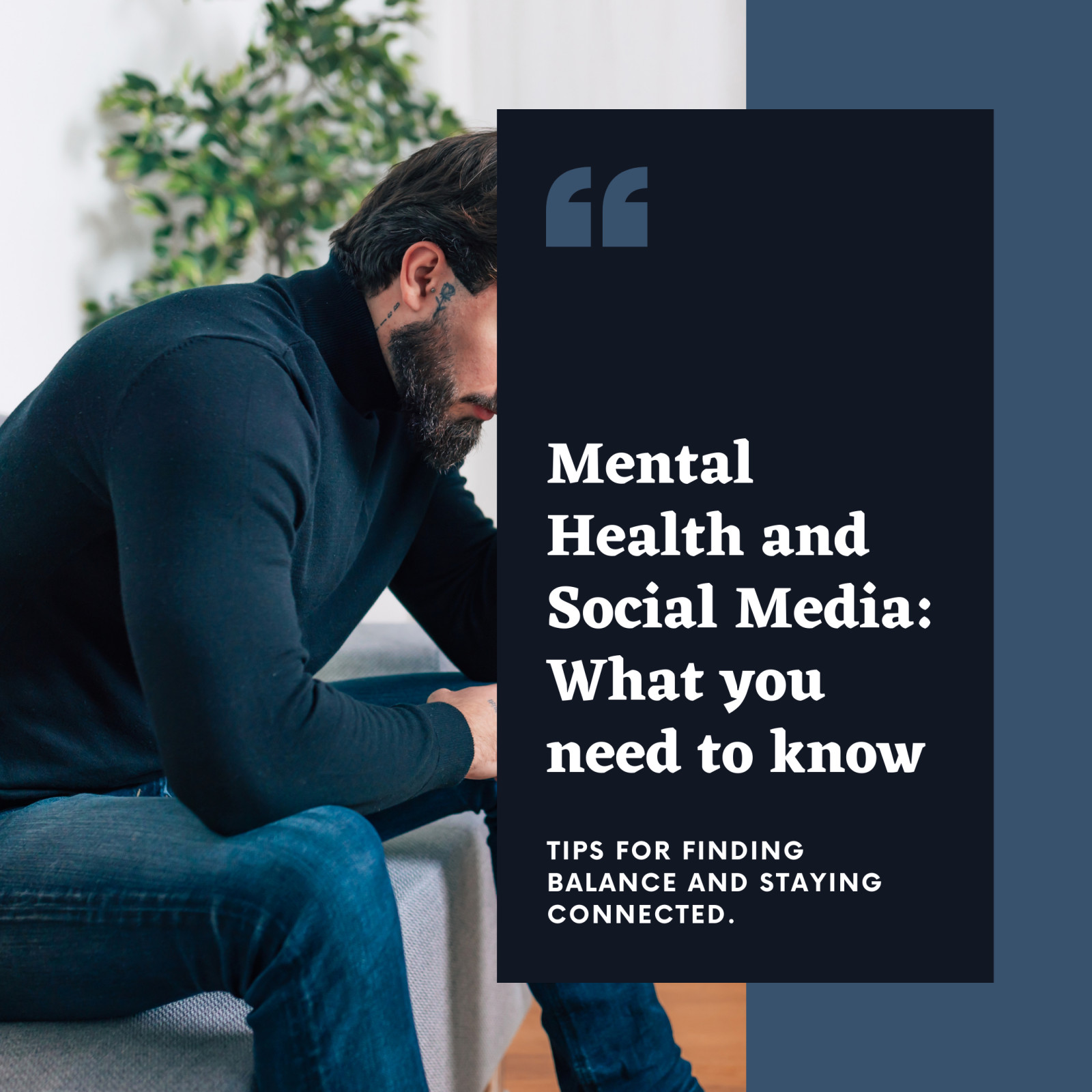
In the digital landscape of constant connectivity, social media plays a pivotal role in shaping our interactions and expressions. Despite its immense benefits for global communication and creativity, excessive social media use can detrimentally affect our mental health, leading to feelings of inadequacy, depression, and anxiety due to the onslaught of others' curated lives and the addictive nature of digital platforms. Establishing healthy boundaries is therefore essential to safeguard our well-being, enabling us to enjoy social media's advantages without allowing it to consume our time, emotions, and relationships.
For individuals, setting limits on social media consumption can significantly enhance mental health. Strategies like mindful engagement, limiting time spent on platforms, unfollowing negative accounts, and incorporating screen-free activities into daily routines can prevent feelings of inadequacy and boost overall happiness. For parents, professionals, and couples, creating specific boundaries around digital use can help combat potential negative impacts on children's development, work-life balance, and relationship satisfaction, encouraging more meaningful offline connections and personal fulfillment.
To maintain a healthy relationship with social media, it's not just about setting boundaries; incorporating regular digital detoxes, seeking professional help when needed, and cultivating self-compassion are also vital. By tackling the challenges of digital interaction with proactive strategies, individuals can find a balanced approach to social media, ensuring it remains a tool for positive connection and self-expression rather than a source of stress. Achieving this balance is key to leveraging the power of social media while protecting and prioritizing mental health.
Read more...
Anxiety is a prevalent mental health issue that significantly affects individuals' lives worldwide, but overcoming it is possible with the right strategies and support. Coaching plays a vital role in this journey, focusing on the present and future to empower individuals to manage their thoughts and actions effectively. By setting realistic goals, developing coping mechanisms, and utilizing cognitive-behavioral techniques, coaching offers a path toward managing and overcoming anxiety.
Incorporating mindfulness and relaxation techniques into one’s routine, guided by a coach, can greatly aid individuals in managing their anxiety, promoting a sense of calm and well-being. Furthermore, building resilience and boosting self-confidence are key focuses in anxiety coaching, helping individuals bounce back from challenges and foster a positive mindset. Finding the right coach, who provides a supportive environment and tailored techniques, is crucial in taking the next step toward a life free from anxiety.
To assist those facing the challenges of anxiety, coaching provides actionable steps and ongoing support to regain control and lead a fulfilling life. Setting goals, challenging negative thoughts, and prioritizing self-care are among the effective strategies shared. For anyone struggling with anxiety, seeking the guidance of a specialized anxiety coach could be the beginning of a transformative journey towards healing and personal growth.
Read more...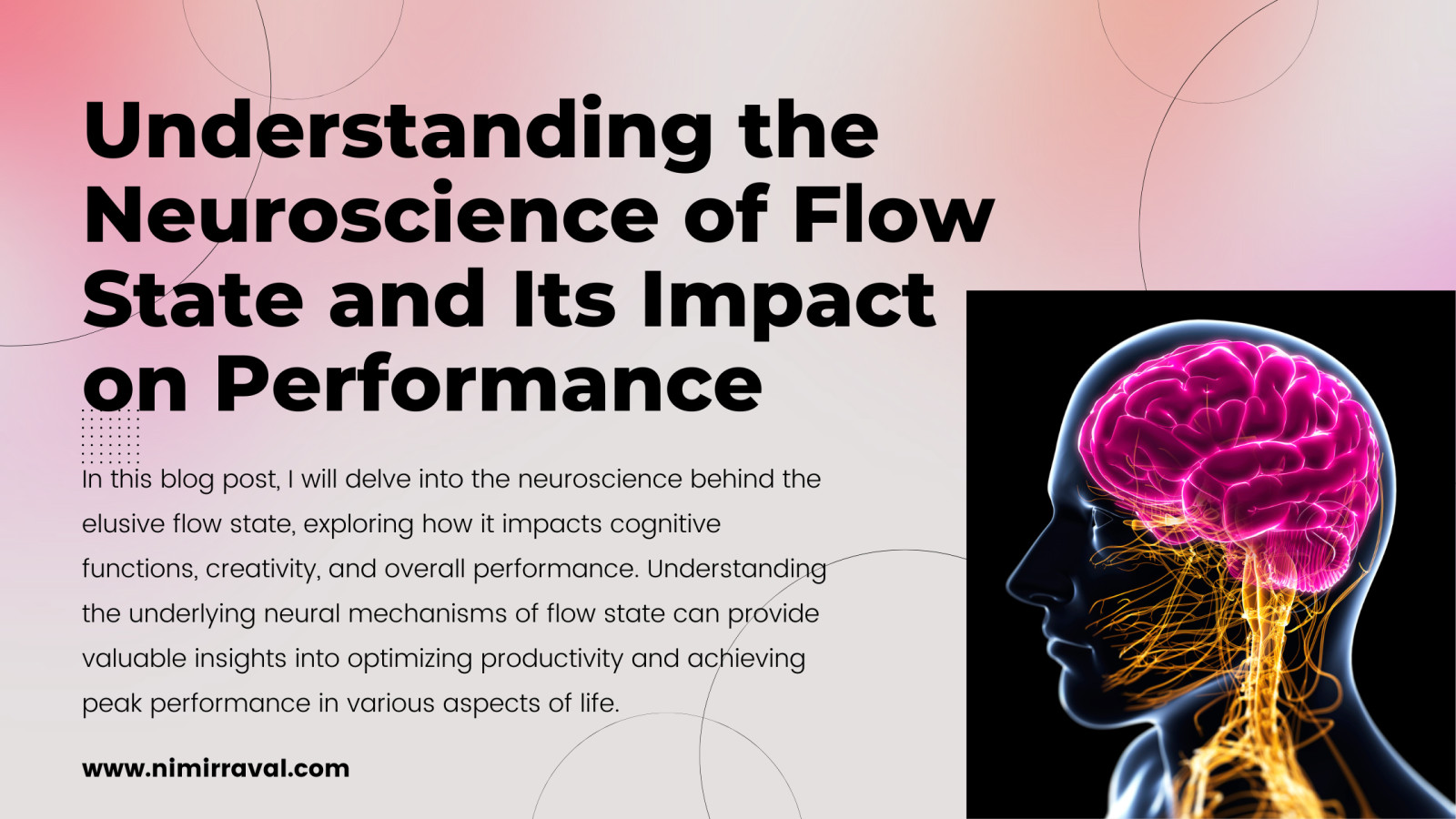
The human brain, with its extraordinary capabilities, can sometimes be hindered by distractions and procrastination. However, by understanding the concept of the "flow state," as introduced by psychologist Mihaly Csikszentmihalyi, individuals can tap into heightened concentration, engagement, and fulfillment in various aspects of life. This state of complete absorption enables increased creativity and productivity, allowing us to fully utilize our skills and achieve our goals.
Neuroscientific research sheds light on the intricate neural pathways and brain regions, such as the prefrontal cortex and basal ganglia, that underpin the flow state. This state of mind is characterized by effortless concentration, deep engagement, and a sense of enjoyment in the task. Scientists have recognized the crucial roles of systems such as the LC-NE system, which regulates attention and energy levels, and the dopaminergic reward system, which boosts motivation and satisfaction. Understanding these mechanisms can aid in achieving and sustaining the flow state, optimizing performance and well-being across diverse domains.
Combining insights from neuroscience, the article highlights the symbiotic relationship between the LC-NE and dopaminergic systems in fostering the flow state. This delicate balance between focus, motivation, and disengagement is key to achieving peak performance and satisfaction. Hence, mastering the flow state not only enhances productivity and creativity but also contributes to personal fulfillment and the transformation of challenges into victories, emphasizing the power of the brain's internal processes in elevating human potential.
The human brain, a marvel of complexity and capability, possesses the unique ability to enter a "flow state," a phenomenon where focus, creativity, and productivity soar, allowing individuals to accomplish tasks with unparalleled efficiency and satisfaction. This profound mental state, characterized by deep absorption and a sense of fulfillment, is underpinned by the intricate dance of neural pathways and brain regions, including the prefrontal cortex, basal ganglia, and amygdala. Understanding the science behind the flow state unravels the potential for individuals to harness this power, transforming the way we approach work, creativity, and everyday challenges.
Central to the regulation of our focus and engagement levels is the LC-NE system, a critical neurological command center that manages attention and energy distribution based on the task at hand. It operates in a dynamic equilibrium of exploitation, exploration, and disengagement modes, each significant for achieving and maintaining the flow state. Complementarily, the brain's dopaminergic reward system plays a pivotal role in motivation, enhancing cognitive and emotional resilience against fatigue, fostering a positive outlook, and ultimately contributing to the sense of accomplishment associated with flow activities.
By delving into the neuroscience behind the flow state and understanding the key systems involved, individuals can learn to leverage these mechanisms to optimize performance and well-being across various life domains. This insight not only propels us towards maximizing our capability for intense focus and creativity but also emphasizes the importance of balancing our mental and physical health to sustain high levels of productivity. Through strategic engagement with our brain's innate processes, achieving flow becomes a more attainable reality, enabling us to transform our approach to tasks from mundane to extraordinary.
Read more...
Wellness trends are continually transforming the way we understand and care for our physical, mental, and emotional health. These trends highlight the importance of personal well-being, illustrating how it influences our physical health, emotional balance, happiness, and resilience against stress. Innovations in technology such as wearable devices, telemedicine, mental health apps, and virtual reality offer new methods to enhance our well-being, making personal health practices more accessible and tailored to individual needs.
The emergence of mindfulness and mental wellness practices emphasize the significance of being present and fully engaged with our thoughts and environment, showcasing the benefits of meditation and mindfulness on stress reduction and mental clarity. Similarly, biohacking presents a proactive approach to personal health, emphasizing the use of technology and lifestyle changes to optimize physical performance and well-being. These methods, along with holistic and integrative wellness practices, offer comprehensive ways to improve health and prevent illness by addressing the mind, body, and spirit collectively.
Amidst evolving wellness trends, the integration of social and environmental factors highlights the interconnectedness of our well-being with the communities and environment we inhabit. Creating supportive, inclusive spaces and adopting sustainable living practices are emerging as crucial elements of holistic well-being. Embracing these wellness innovations can lead to significant improvements in physical health, mental clarity, and emotional balance, marking a path toward a more fulfilling life.
Read more...
In this blog post, I explore the concept of procrastination, its underlying causes, and its impact on mental health. Perfectionism is identified as a common roadblock that fuels procrastination, leading to excessive self-criticism and fear of failure. Recognizing the signs of being stuck in a perfectionist mindset is crucial for overcoming this trap and becoming more efficient and satisfied with your work. Procrastination can take a toll on your mental health, causing increased stress, anxiety, and feelings of guilt or low self-worth. By recognizing your procrastination patterns and implementing strategies such as breaking tasks into smaller steps and setting achievable goals, you can overcome procrastination and achieve greater productivity. Embracing progress over perfection and celebrating small victories along the way can help you stay motivated and ultimately lead to long-term success. Seeking support and accountability from others is also beneficial in overcoming procrastination, especially if perfectionism is a significant obstacle for you.
Read more...
This blog post explores the challenges of winter and post-holiday blues and offers five mental health strategies to navigate this season with greater ease. It emphasizes the importance of self-care practices, such as reading, warm baths, and mindfulness, to alleviate stress and enhance mood. Staying physically active is also crucial for mental well-being, as regular exercise releases endorphins and reduces stress, anxiety, and depression. Seeking support from loved ones and professionals, using light therapy, and exploring alternative therapies are other effective strategies highlighted in the article. Additionally, maintaining a well-balanced diet is pivotal in supporting mental health during the winter months. By prioritizing these strategies, individuals can combat the winter blues and embrace self-care for optimal mental well-being.
